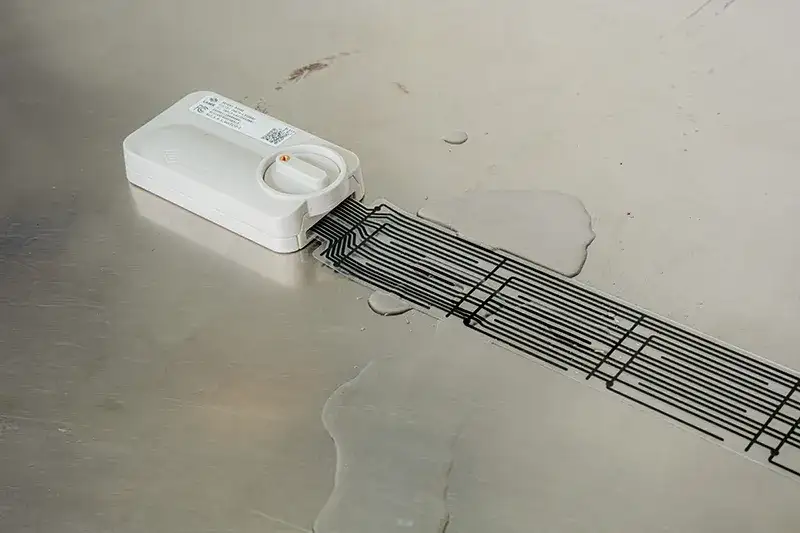Detecting Water Leaks Under Sinks
Under-sink leaks are responsible for 16% of all water leaks in commercial buildings.
Discover where water leaks commonly occur, the damage they cause, and key attributes of water leak detection solutions that offer effective detection.
What causes under-sink water leaks?
- The most common causes of under-sink water leaks are loose connections from the pipes to the sinks, and worn out seals at these connection points.
- Other common contributing factors include metal pipes corroding, rubber pipes perishing, hard water buildup, and clogged drains.
- In settings where a sink and countertop are sealed, the (typically silicon) sealant is subject to failure, allowing water to leak under the counter, along the outside of the sink bowl, and to pool on surfaces underneath it.
- Sinks in kitchens run a higher risk of water leaks due to the rising popularity of additional faucets for boiling, chilled, or sparkling water; and the presence of garbage disposals.
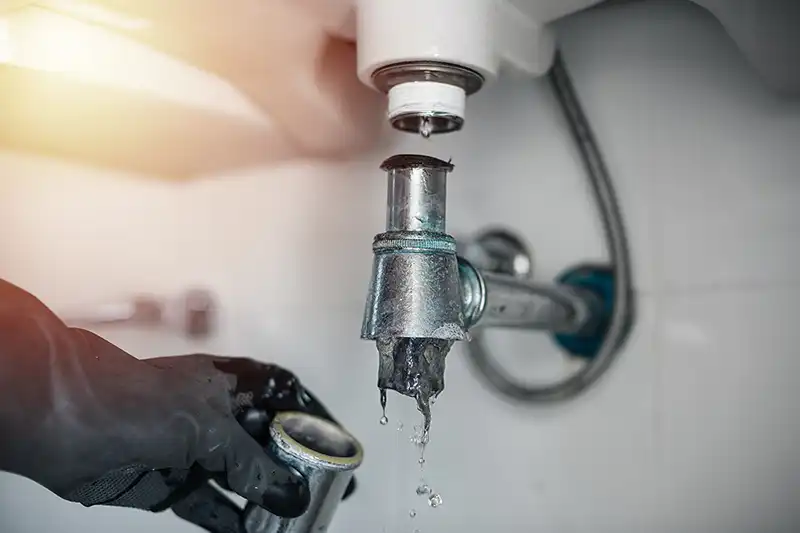
What happens when a sink leaks?
Water pools
An under-sink leak will typically create an accumulation of water in one or more of the following places:
- Directly below the sink, often in a cupboard, on a floor, or both if the leak is of sufficient volume.
- In the walls behind the sink, particularly if pipe failure is involved.
- Eventually, water will seep through to adjacent walls and the ceilings of the floor below the leak.

Damage occurs
As the water pools:
- Porous materials will soak the water up, potentially damaging them.
- Drywall may swell and buckle, and will show visible staining.
- If water pools on the floor in an exposed area, it causes a slip hazard.
- In some cases, water may enter electrical outlets and cause them to short.
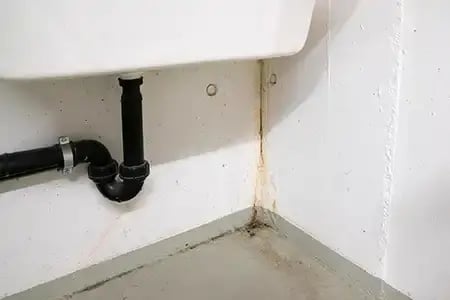
Damage escalates
If the leak is in a concealed location, it’s less likely to be discovered, causing further damage:
- Areas that remain damp will start to grow mold and mildew, which can impact air quality and tenant health.
- A leak that is sufficiently large, remains undetected for a long period of time, or recurs often, may do significant structural damage to the fabric of the building.
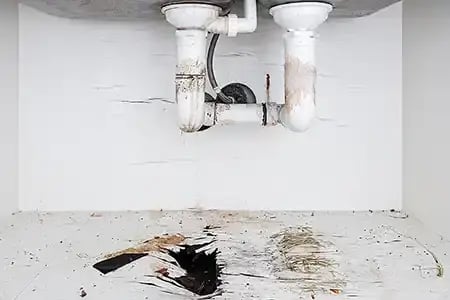
Under-sink leaks are poorly served by traditional water leak detectors
Older water leak detectors like pucks and flow meters offer inadequate detection for under-sink leaks
-
Pucks are often too large for tight areas, and are prone to getting lost when left lying loose in cupboards. Their lack of sensitivity means a high false positive rate: reporting a leak even if it's just a stray drop of water.
-
Rope sensors can be too bulky for tight areas, and are also prone to high false positive rates that result in time-consuming and unnecessary callouts for phantom leaks.
-
Flow meters are great for noticing changes in flow rates, but can’t pinpoint the leak location to a specific sink.
-
Water leak detectors that sound an audible alarm tend to be deactivated by tenants who dislike the noise, leaving the area completely unprotected, and facilities managers unable to monitor for leaks.
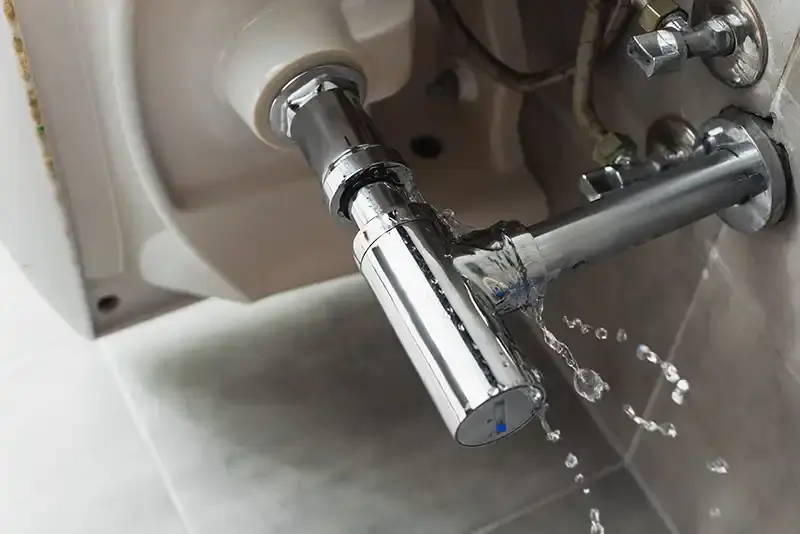
To successfully detect under-sink leaks, a water leak detection solution needs comprehensive capabilities
-
To minimize false positives by distinguishing between a stray drop of water, and a genuine water leak - and responding to each scenario appropriately.
-
To directly provide facilities managers with information on the leak and its location, so that they can prioritize its repair according to urgency and potential damage.
-
To be able to detect a leak early enough to avoid significant downtime and damage, without causing false positives.
-
To provide aggregated data to facilitate improved decision-making across fixtures, floors, and facilities.
-
To be easy to install where there are space constraints, and be suitable for a variety of under-sink environments.
How LAIIER’s Severn WLD detects under-sink water leaks
Severn WLD™ detects under-sink leaks anywhere sinks are present in commercial and industrial settings
- Facilities managers receive emergency leak alerts that identify the specific location where water is pooling. Further data can be reviewed to determine leak size and growth, making it easier to prioritize repairs.
- With tool-free, self-adhesive installation, devices remain in place until you decide to move them. A robust enclosure and IP65 rating make them suitable for use anywhere inside, even in industrial environments.
- Its small size and trimmable sensor means Severn WLD easily fits into tight spaces behind sinks, below pipes, and in cupboards.
- Water leaks can be detected early, before significant damage occurs.
- The same water leak detection device serves multiple use cases, including detecting water leaks from risers, plant rooms, HVAC, appliances, and industrial equipment.
Explore the benefits of early water leak detection
Book a call with our team for a confidential discussion about water leaks in your commercial and industrial buildings.
